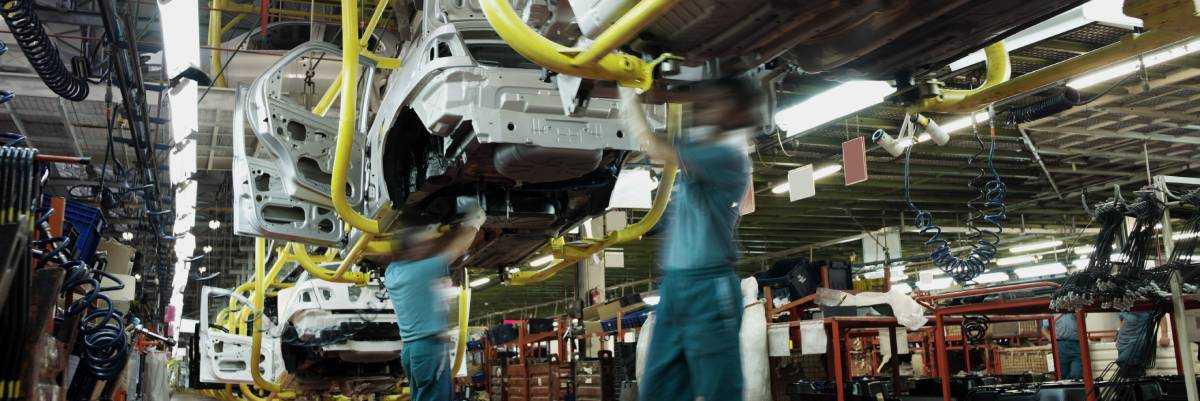Frontline teams frequently are involved in Kaizen events and have been empowered to “stop the line” in Lean manufacturing. Many shop floor teams are running events on 5S, efficiency and safety. But in too many organizations, the frontline receives little or no problem solving training. To build these skills begins by introducing a few useful tools. Organizations that have opportunities for workers to understand troubleshooting and to learn problem solving skills build career-enhancing capabilities. In our client organizations, frontline exposure to problem solving training has proven critical to building a culture of Continuous Improvement.
Here are three particularly useful tools that quickly enhance problem solving skills on the front line by helping workers to communicate problems more accurately as they arise and by building understanding of the process needed to find cause.
The Five Whys: Toyota’s Five Whys process basically begins by stating the problem and then asking “Why?” until the answer is “I don’t know.” One of the real values of providing this simple tool is in helping workers to refine how they communicate problems that could arise on their shift. By asking questions, they can better state the problem and also accelerate problem solving. For example, instead of stating a problem as “The floor is wet,” asking why initiates some preliminary investigation: Why is it wet? Because the vat on line 3 is overflowing. Why? Because the water line above the vat is leaking. Why? I don’t know. Now, instead of reporting to maintenance that floor is wet, the issue is closer to finding cause by stating that the water line is dripping into the vat on line 3 and flooding the floor. This problem needs more than a mop.
Kepner-Tregoe Problem Analysis:
Describing problems on the frontline can be dramatically improved by using KT Problem Analysis for stating and specifying a problem. Specifying a problem can be done most simply with a matrix of two columns: Is and Is Not and four rows that ask What? Where? When? Extent?
In our last example, instead of “the water pipe is leaking into a vat,” we ask, Where? And specify that it is the pipe above the vat on line three, but it is not the pipes over lines one and two. With these Is/ Is Nots to guide them, problem solvers can wrap their arms around the problem’s parameters and focus the investigation by exploring distinctions that will guide problem solvers toward cause. Learning a more involved approach to problem solving like this and other steps in the Problem Analysis process can be accelerated by taking a learn and do approach. At KT we use simulations that allow frontline workers to learn and do for rapid skills acquisition in manageable training bites.
8D:
Introducing Ford’s overview of the complete root cause analysis process can help the frontline to understand where a problem currently stands in the resolution process, and it provides a macro view of troubleshooting as a process. Because steps have been taken to work around or contain a problem (D3), it does not mean that cause was found (D4) or a solution implemented (D6), but it is a critical step in troubleshooting. In some cases, such as an old machine that is scheduled for replacement, containment is enough until the new machine arrives. The picture provided by 8D is a good way of introducing RCA and understanding the full process of mitigating a problem, finding true cause and actually implementing a resolution.
Choosing the right tool for a problem can quickly accelerate issue resolution. By introducing these and other key tools to the frontline, workers can accelerate problem solving by better describing a problem and understanding problem solving as a process. The frontline can play a critical role in Continuous Improvement efforts by appropriately adding their insights and experience. With problem solving training, they develop a greater commitment to resolving issues because they have the capabilities to play a key role in the process.
To learn about creating opportunity at the frontline read How Front Line Employees Can Take On A Leadership Role In Continuous Improvement
Christian Green is Global Leader for Operational Excellence at Kepner-Tregoe. He leads a global consulting team that supports manufacturing clients’ pursuit of Operational Excellence with a practical focus on driving results by improving key performance indicators. Contact him at cgreen@kepner-tregoe.com
Kepner-Tregoe has been the industry leader in problem-solving and service-excellence processes for more than 60 years. The experts at KT have helped companies raise their level of incident- and problem-management performance through tools, training and consulting – leading to highly effective service-management teams ready to respond to your company’s most critical issues.








